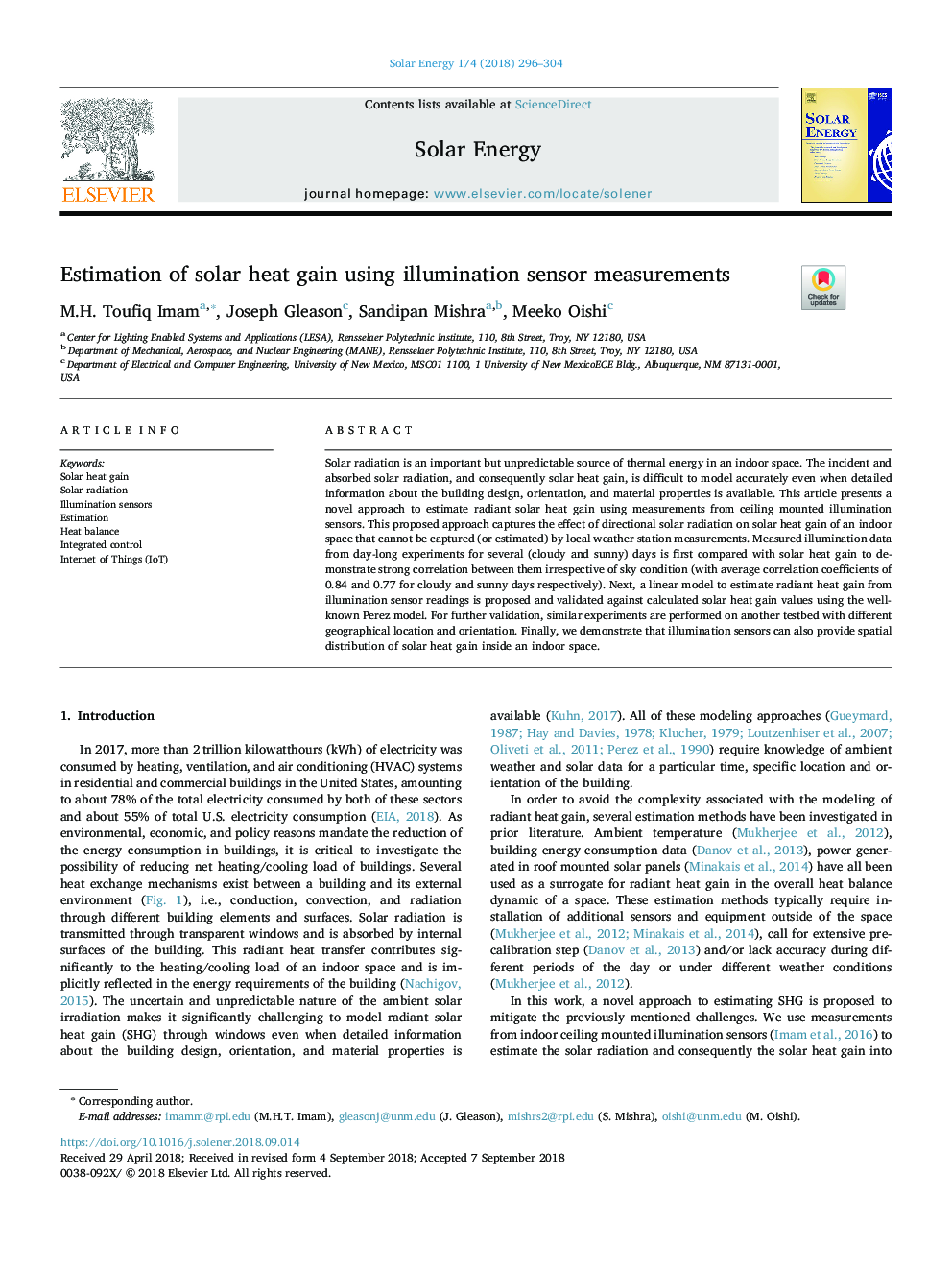| Article ID | Journal | Published Year | Pages | File Type |
|---|---|---|---|---|
| 10141955 | Solar Energy | 2018 | 9 Pages |
Abstract
Solar radiation is an important but unpredictable source of thermal energy in an indoor space. The incident and absorbed solar radiation, and consequently solar heat gain, is difficult to model accurately even when detailed information about the building design, orientation, and material properties is available. This article presents a novel approach to estimate radiant solar heat gain using measurements from ceiling mounted illumination sensors. This proposed approach captures the effect of directional solar radiation on solar heat gain of an indoor space that cannot be captured (or estimated) by local weather station measurements. Measured illumination data from day-long experiments for several (cloudy and sunny) days is first compared with solar heat gain to demonstrate strong correlation between them irrespective of sky condition (with average correlation coefficients of 0.84 and 0.77 for cloudy and sunny days respectively). Next, a linear model to estimate radiant heat gain from illumination sensor readings is proposed and validated against calculated solar heat gain values using the well-known Perez model. For further validation, similar experiments are performed on another testbed with different geographical location and orientation. Finally, we demonstrate that illumination sensors can also provide spatial distribution of solar heat gain inside an indoor space.
Keywords
Related Topics
Physical Sciences and Engineering
Energy
Renewable Energy, Sustainability and the Environment
Authors
M.H. Toufiq Imam, Joseph Gleason, Sandipan Mishra, Meeko Oishi,
